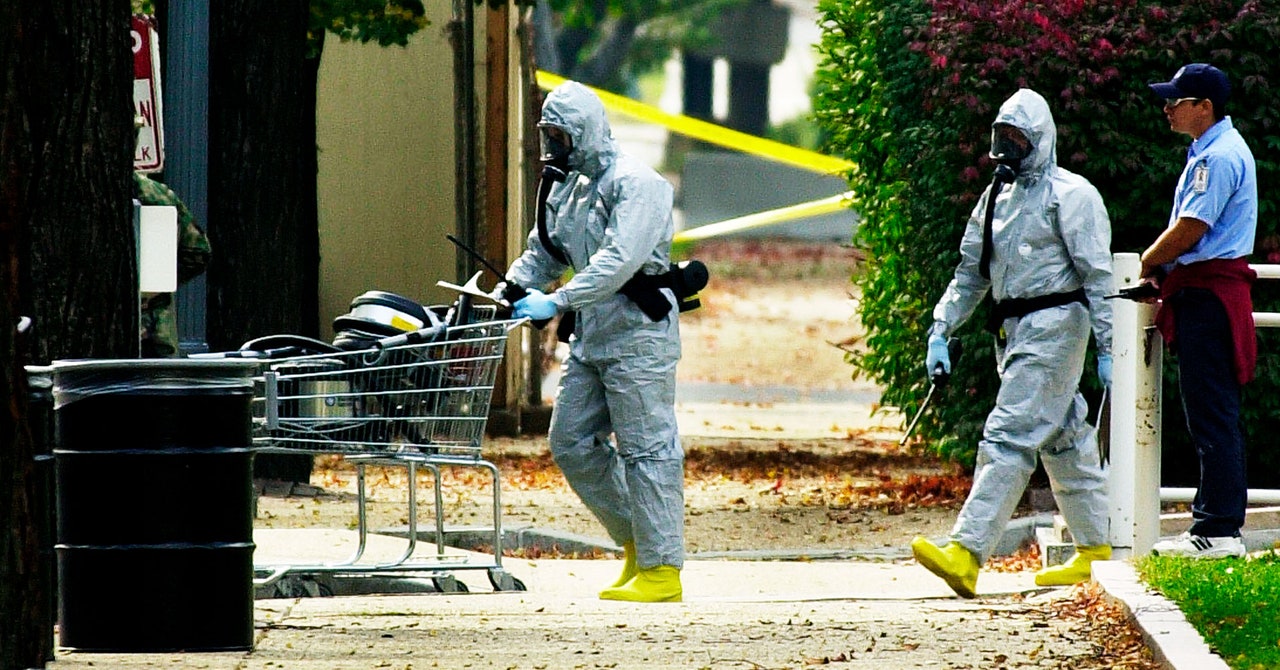
It was still early when Larry Bush reached the gurney in the emergency room of JFK Medical Center in Atlantis, Florida, part of a strip of towns that stretches from Miami to West Palm Beach. Bush was the hospital’s chief of staff and an infectious diseases physician, on his way to a regular morning meeting, but some ER physicians had asked that he drop by. A 63-year-old man named Bob Stevens had been brought in at about 2:30 am with a roaring fever. Now he was comatose and plugged into a ventilator, with his frightened wife by his side.
The wife told Bush their story. As he recalled it later, she said they lived a few miles away, closer to the ocean. Her husband worked in Boca Raton for a company that published supermarket tabloids, but they had been out of state for a week, visiting their daughter. He had started to feel ill the day before on the long drive home, and had gone to bed as soon as they arrived. He had woken her up in the middle of the night, wandering around the house, confused.
Fever, confusion, rapid collapse: That sounded to Bush like meningitis, an infection in membranes around the spinal cord and brain that can be caused by several organisms. He headed to the hospital’s lab to check test results, and found himself staring down a microscope at one he had not expected to see: strings of bright-purple rod-shaped bacilli, threaded end to end like train cars on a track.
Bush recognized the arrangement, but he couldn’t make sense of it. Infections with the organism he was looking at are so rare that they had occurred in the United States fewer than 20 times in a century, and only among people in a narrow range of occupations—cattle ranchers and drum-makers, not photo editors in a Florida suburb.
“If this is anthrax,” he said to himself, “it’s bioterrorism until proven otherwise.”
That was October 2, 2001. It took two days for Bush’s suspicions to be confirmed. When his diagnosis was announced at a press conference on October 4—20 years ago today—it launched the most complex and concentrated public health response in US history to that point, rivaled only today by the effort to respond to Covid.
You could not open a laptop or turn on the news three weeks ago without being reminded of the 20th anniversary of the World Trade Center attacks of September 11, 2001. Compared to that honored memory, the anthrax-letter attacks—the first fatal bioterror attack on US soil—are barely remembered, though in the days following Bush’s announcement they killed five people, sickened another 17, sent 30,000 people to doctors, put 10,000 of them on preventive antibiotics, and convulsed Capitol Hill and the New York media world.
But people who were involved in the response then, including Bush—who continues to work as an infectious disease specialist at the medical center where Stevens later died—say the anthrax attacks presented hard lessons that could have helped the Covid response if they had been remembered. “What went well was our ability to recognize it right away, and report it,” says Bush, who is now also an affiliate professor at the medical schools of Florida Atlantic University and the University of Miami. “But we are not better prepared now than we were then.”
A brief recap, though with something as complicated as the anthrax attacks it’s difficult to be brief: Stevens was not the first case; he was only the first to be diagnosed. The anthrax had been sent through the mail that September and October. All the victims had some contact with spore-laced letters that were sent to offices in Congress and the media, or were exposed after the letters spread spores into mail-processing equipment and contaminated other mail, workplaces, and homes.


